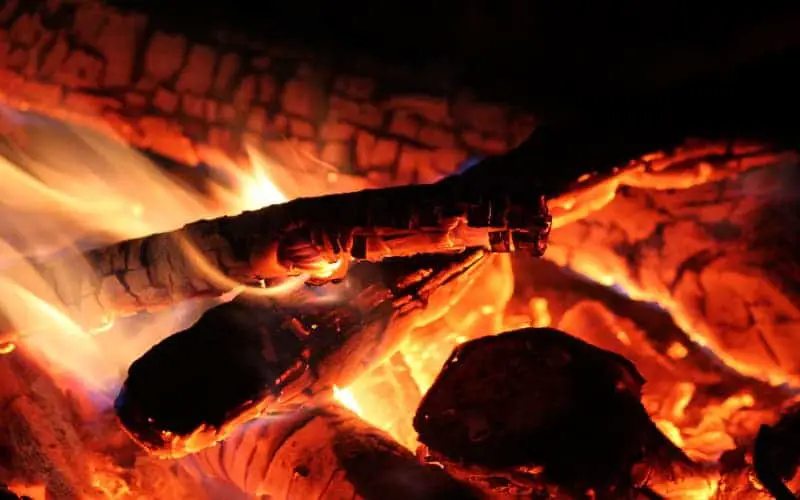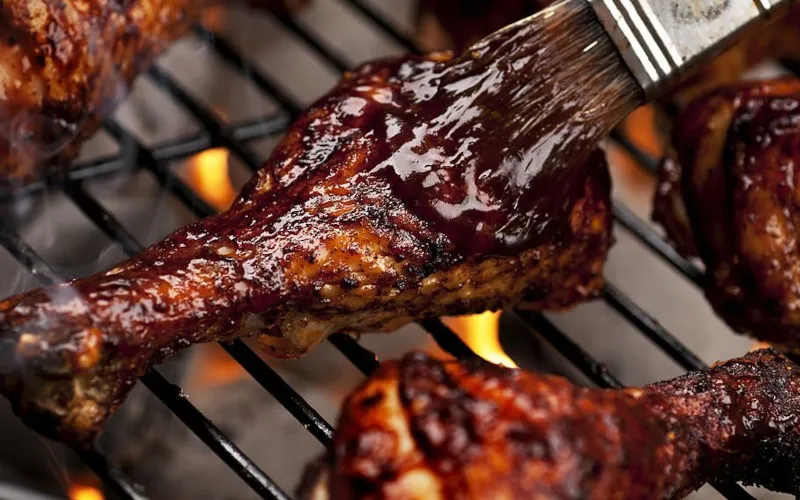Prime rib and ribeye are relatively similar, yet very different. These two pieces are steak cuts from the rib. Many people battle a lot when choosing between the two, thanks to their rich flavor, marbling, texture, and taste.
Choosing between a prime rib and ribeye can be daunting. Both options are great and bring plenty to the table, but which option should you choose?
What is the difference between a rib eye and a prime rib? Let’s take a look as well as what to expect from each cut.
Understanding what each option brings to the table will help make better decisions in the long run. Here are a few insights.
Prime Rib vs Ribeye Comparison Table
| Prime Rib | Ribeye | |
|---|---|---|
| Location on cow | Ribs | Upper central ribs |
| Cut Size | Large | Medium to large |
| Bone | Includes a ribeye and bone | Boneless or bone-in |
| Weight | 4-8 lb | 8-12 oz |
| Texture | Soft and moister | Tougher |
| Flavor | Rich flavor | Full flavor |
| Meat content | High | High |
| Fat content | Moderate to high | Moderate to high |
| Servings per cut | 12-16 | 2 |
| Calories (3oz serving) | 290 | 170 |
| Saturated fat (3oz serving) | 9.3 g | 2.8 g |
| Protein (3oz serving) | 19.2 g | 26 g |
| Iron (3oz serving) | 2.1 mg | 3 mg |
What is Prime Rib?
You could also refer to prime rib as standing rib roast, which comes from an animal’s primal rib section. It is a large roast, making it an excellent choice for dinners and large parties.
Depending on your preferences, you can get it as a bone-in or boneless option. Since prime rib comes from muscles not heavily used, this cut is tender, juicy, and fat-marbled.
You’ll roast this meat standing, meaning the ribs must be stacked vertically. Its fat layer must be on top, as it helps flavor the meat down.
Its lean cuts imply that it comes with low amounts of calories and fats and enough essential nutrients.
Experts suggest that you buy a pound of prime rib per person. This meat assures you of excellent nutritional value, highlighting essential nutrients like zinc, vitamin B, and low amounts of calories.
How to Cook Prime Rib?
It is possible to roast prime rib at low temperatures without burning it, drying it out, and ruining the texture.
Some chefs believe you can season it before you start to cook it, although others tend not to get involved in the process until you begin smoking.
The secret to preparing a good prime rib is to heat it gradually, ensuring you do not exceed the necessary temperature levels or hold it for too long. If everything works out as required, your prime rib will be tender, pink, and juicy.
Roasting prime rib at low temperatures will be one of the best moves. In most cases, you will need to heat it to between 130 and 140 degrees Fahrenheit.
You could also sear it for approximately five hours at about 200 degrees Fahrenheit.
What is Ribeye?
Alternatively called the rib eye, ribeye is a boneless cut from the sixth to the twelfth rib and between the shoulder and the loin. However, you could also get bone-in ribeye, which makes it a rib roast.
Ribeye comes with a relatively rich fat content, meaning it would be best to cook it in a cast-iron skillet. Its bone helps add flavor and moisture to the dish, yet it could complicate the cooking process for some people.
The ribeye muscle is relatively tender, taking a relatively short time to cook—the tenderness results from the fact that this muscle is barely exposed to too many exercises.
Understanding the nutritional value offered by this meat helps decide how much you should eat.
A 3.5-ounce serving of ribeye typically provides 206 calories, 10.5 grams of fat, 79 grams of cholesterol, and vitamin B.
You’ll find it easier to cook this ribeye over high heat on a grill, boiler, or cast-iron skillet. You’ll be sure of a flavorful brown crust and a juicy interior with high heat.
How to Cook Ribeye?
The reverse sear cooking method has proven to be an excellent choice among many people. It is straightforward, less time-consuming, and more effective.
It follows the following steps:
- Ensure that you preheat your oven, preferably to about 275 degrees Fahrenheit.
- Place the meat in the oven and ensure the internal temperature reaches 90 and 95 degrees Fahrenheit.
- Once it attains the correct temperature levels, place it in a pan and add some butter.
- Take the time to sear both sides of the meat, turning them regularly.
- Serve while hot.
What’s the Difference Between Prime Rib and Ribeye?
While they come from the same body, prime rib and ribeye vary significantly. Here are a few differences you will note.
Taste and Texture
You’ll get a rich and pronounced flavor from prime rib and ribeye, typical of any meat from the rib.
Thanks to the presence of bones, connective tissues, and fat, the prime rib meat assures you of a more robust flavor.
Conversely, the ribeye steak has a mild flavor, highlighting a buttery taste and a smooth texture.
Cooking
It would be best to understand how to prepare your steak, as this determines how much you’ll enjoy your meal.
In most cases, you will have to cook your prime rib in relatively low temperatures. Yet, you will cook it for a relatively long time.
On the other hand, you will need a little more heat when preparing ribeye. It would help to pan-sear or reverse-sear it.
Cost
Prime rib tends to be a little costlier than ribeye. That is because of the large chunk of meat you get from this prime rib.
However, you will spend a little more on a pound of ribeye than a pound of prime rib. That is because ribeye is much beefier, making it an ideal choice for bigger families.
Prime Rib vs Ribeye: Which One is Better?
Choosing between prime rib and ribeye can be daunting, thanks to the significant similarity in taste and flavor.
Prime rib is an excellent choice for people who love a roast cut, while ribeye would be ideal for anyone who loves steak.
Frequently Asked Questions
Which is Better: Prime Rib or Ribeye?
No one-dimensional answer exists, as the choice varies with preferences. While ribeye assures you of the best cut from the primal part of the rib, prime rib offers you a more significant amount that entails the ribeye too.
Prime rib is known to be one of the tastiest cuts from the cow. It can be cooked in some ways, including roasting or slow cooking, grilling, and broiling.
However, most cooks would suggest that you consider prime rib. You’ll be sure of excellent flavor and texture if you keep it at the proper temperatures.
Usually, ribeye would be a suitable choice for you if you love steak, while prime rib comes in handy for those that love roast steak. It would be best to choose whichever assures you of the best flavor.
Why is Prime Rib so Expensive?
Prime rib is costlier than ribeye for various reasons. Most people consider this part a better meat cut, thanks to how beefy it is. It assures you of an unrivaled texture and flavor, giving you a premium taste.
Since this muscle is less used, it tends to be a lot sweeter and tenderer. This meat comes from a less exposed muscle to work, meaning it is lean and with some fat. Usually, the fat helps improve the texture of your cut.
Besides, there is a low supply of prime rib, meaning its demand overwhelms most markets. This shortage significantly contributes to its increasing prices.
Why Does Prime Rib Taste Different Than Ribeye?
There is no denying that prime rib has a more robust flavor than ribeye. This incredible taste is because of the cut’s bones, connective tissues, and fat. With these elements, you will be sure of your roast meat’s smoother and tastier texture.
For excellent results, ensure that you embrace the proper cooking methods. Choose suitable cooking temperatures, too, as this determines how tasty the meat will be in the long run.
How Long Can Prime Rib Last in the Fridge?
The longevity of your prime rib will often depend on how you store it. Typically, this meat will last for approximately three to five days when refrigerated.
In most cases, you will have to wrap the leftovers tightly in plastic before placing them in the fridge. Tight wrapping helps protect the meat from oxidation, enhancing its longevity.
Ensure that you start checking for its spoilage after day three.
According to the USDA, raw meat should remain in the fridge for three to five days. However, you can consider keeping the period shorter than this. It helps maintain the flavor and texture.
How Long Does Ribeye Last in the Fridge?
Raw ribeye steak should remain in the fridge for three to five days. It could sometimes stay for up to two weeks when frozen.
Ensure that you wrap it tightly, keeping oxygen away from it. This approach helps maintain its integrity for a relatively more extended period.
How Much Prime Rib Do I Need For a Family of Three?
You’ll always want everyone to get satisfied when served with prime rib. Usually, you will need a pound of this meat for every individual, meaning a family of three people requires at least three pounds of prime rib.
Each bone roast feeds between two and three adults, depending on their hunger. You will also need to pay attention to the side dishes accompanying the prime rib, as heavier options allow you to cut on the size of the meat.
How Long Does It Take to Cook Prime Rib at 225 Degrees Fahrenheit?
Cooking your prime rib at 225 degrees Fahrenheit is recommended. This temperature allows you to roast your food for between four and six hours.
The period could take longer or shorter depending on how tender the meat is.
Ideally, it will take about 35 minutes per pound when heating it at 225 degrees Fahrenheit. This period assures you of a rare roast. On the other hand, 40 minutes will be suitable for a medium roast.
Ensure that you first sear the prime rib. You will have to add a little olive oil, sauces, veggies, and spices during this time.
What is the Best Wood to Smoke Prime Rib With?
You need the best wood when smoking prime rib. Hickory wood would be an excellent choice when roasting your meat. It assures you of rich, smoky flavors.
However, it requires constant attention, as it could readily turn your prime rib bitter.
You could also consider oak, which has proven reliable for beginners. It is easy to control and provides you with enough heat.
Other suitable wood options are pecan, mesquite, and apple. They assure you of a smoky flavor and enough heat. You will barely have any issue controlling these woods.
Can You Cook Ribeye Like Prime Rib?
Yes. Cooking prime rib and ribeye is almost similar. You can consider cooking your ribeye in a grill or oven, depending on your preferences and what you have.
Ensure that you follow these steps:
- Take the time to rub your rib eye with any dry rub, preferably two hours before you start to cook it.
- Approximately 30 minutes before you start the cooking process, preheat your oven to 450 degrees Fahrenheit.
- Place the meat in a roasting pan and leave it for about 15 minutes.
- Roast the meat until its internal temperature is about 120 degrees Fahrenheit.
Do I Cook Prime Rib Bone Up or Down?
It would be best to cook your prime rib bone down; the fat side needs to go up.
Cooking the prime rib bone down means that the bone, fat, and meat are broiled together.
The upside is that the heat gets to more of the flesh, making it much more tender. This method is also a lot quicker, so you can be sure to serve your prime ribs very early on in your party.
This move ensures heat sears the roast, maintaining the juicy flavors. It also ensures that the meat remains relatively tender in the long run.
Should I Sear Prime Rib Before Smoking?
Yes. It would help if you seared the prime rib before smoking it. You could dry-brine it a day before, as this assures you of a richer flavor.
Some people prefer starting with slow-roasting, which slowly grows to high-heat searing. This approach helps form a brown crust, one of the meat’s tastiest parts.
What Temperature Should a Prime Rib Be?
Unless your prime rib is within suitable temperatures, you will barely enjoy it. Ensure that your meat hits between 120 and 125 degrees Fahrenheit or 130 and 135 degrees Fahrenheit for rare and medium-rare prime rib.
On the other hand, the temperature must get between 140 and 145 degrees Fahrenheit for well-done prime rib.
Once the meat hits the right temperature, remove it and let it rest for about twenty minutes. You could loosely tent it with foil during this time.
Final Thoughts
The prime rib vs. ribeye debate has been going on for centuries. Both cuts of meat boast their unique flavor and structured composition.
The prime rib and the rib eye meats come from different portions of the beef rib but are cut entirely differently.
You’ll fall in love with what prime rib and ribeye cuts offer. From their unrivaled texture to their flavor, these steak cuts provide value for money.
If you understand what suits you best, you will have every reason to appreciate the taste.
Take the time to identify which of these two suits you best. It will help you enjoy your meal.





